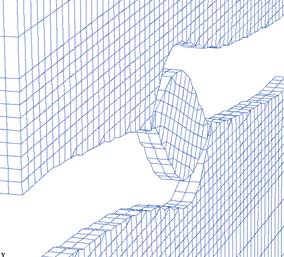Composite laminates — engineered materials made from two or more distinct properties — can be found everywhere, from asphalt-concrete roads to the shell of the space shuttle.
Normal stresses and impacts, as well as fabrication defects or misalignments of the composite fibers, can cause the laminate to separate at the junction point between the two layers. This condition, called delamination, is one of the predominant modes of damage to these materials.
University of Cincinnati aeronautical engineer Ala Tabiei, Ph.D., is using the resources at the Ohio Supercomputer Center to develop a better method for simulating how a laminate cracks and separates, within the non-linear, explicit finite element software DYNA3D.
He is developing numerical methods to determine the dynamic energy released, measure stress factors on the crack under certain conditions and capture when a crack begins to expand. He’s also implementing a method to recalculate the fracture model, which will allow researchers to simulate crack growth when the material is significantly stressed.
“Our goal is to develop an automated, dynamic fracture procedure that can be used to simulate delamination failure between adjacent layers of laminated composites." Dr. Tabiei said. “To effectively use laminate composites, researchers need to consider the characteristics that cause the material to fail. We think this new numerical model, when completed, will be a valuable tool for industries such as aerospace, automotive and construction.”
